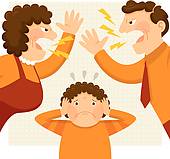From Naomi Cahn and June Carbone, writing for the Institute for Family Studies:
A recent report on which occupations have the highest and lowest divorce rates intrigued us. The study analyzed data from the 2015 American Community Survey, and, based on the number of people in a particular occupation who had married at least once, calculated the percentage of people who divorced. We had fun discovering the likelihood of divorce for a variety of occupations: for example, librarians have about a 28% chance of divorce, while phlebotomists have approximately a 46% chance, according to this study.
But as researchers who have looked at the role of economics and race in marriage and divorce, we wanted to see if the data, broken down by occupation, supported other studies on the relationship between money, marriage, and divorce.
People with less income are less likely to be married in the first place, and more likely to be divorced, as a recent IFS study discussed. About 25% of “poor” adults (in households with income below the 20th percentile) aged 18 to 55 are currently married, compared to 39% of working-class adults (in households with income between the 20th and 50th percentiles), and 56% of middle- and upper-class adults (above the 50th percentile). Furthermore, while under one-third of ever-married middle- and upper-class people have ever been divorced, 40% of working-class and poor men and women who have ever been married have also been divorced.
We also know that wealthier people report being happier in their marriages than low-income individuals: as Bloomberg recently reported, 53% of those who describe themselves as lower class rate themselves as happy in marriage, compared to 70% of those who rate themselves as upper class.
CLICK HERE to read more.







